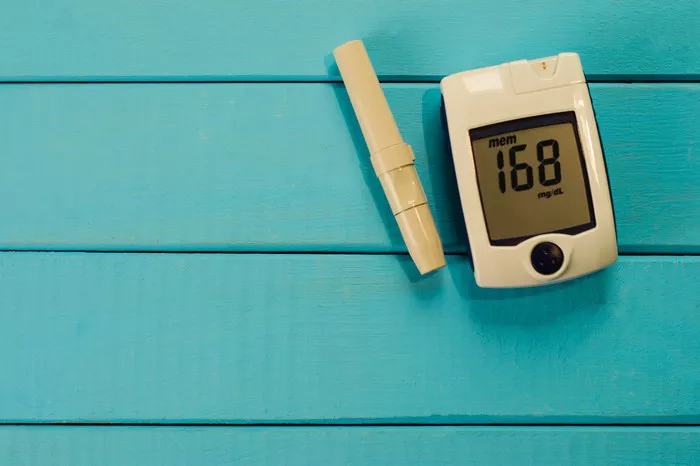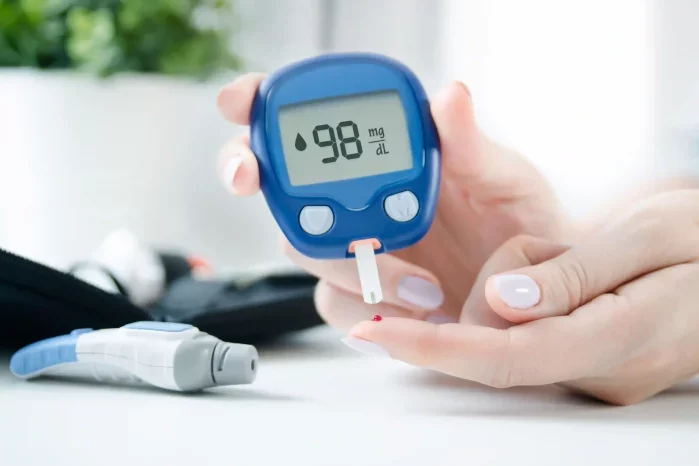Hyperglycemia, or high blood glucose levels, is a common concern for individuals with diabetes. It occurs when the body has too little insulin or when the body can’t use insulin properly. Among the various symptoms associated with hyperglycemia, nausea is a notable one that can significantly impact an individual’s quality of life. This article explores the connection between hyperglycemia and nausea, delving into the underlying mechanisms, other related symptoms, potential complications, and management strategies.
Understanding Hyperglycemia
Hyperglycemia is defined as an abnormally high concentration of glucose in the blood. In people without diabetes, normal fasting blood glucose levels range from 70 to 99 mg/dL, while postprandial (after eating) levels typically stay below 140 mg/dL. For individuals with diabetes, hyperglycemia is generally considered to be a blood glucose level above 180 mg/dL.
Causes of Hyperglycemia
There are several causes of hyperglycemia, which can be broadly categorized into two main groups: insufficient insulin production and insulin resistance.
1. Insufficient Insulin Production
Type 1 Diabetes: An autoimmune condition where the body’s immune system attacks and destroys insulin-producing beta cells in the pancreas. Without insulin, glucose cannot enter the cells, leading to elevated blood glucose levels.
Pancreatic Disorders: Conditions such as pancreatitis, pancreatic cancer, or cystic fibrosis can damage the pancreas and reduce insulin production.
2. Insulin Resistance
Type 2 Diabetes: A condition where the body’s cells become resistant to insulin, requiring more insulin to achieve the same effect. Over time, the pancreas may not be able to produce enough insulin to keep blood glucose levels within the normal range.
Metabolic Syndrome: A cluster of conditions, including obesity, hypertension, and dyslipidemia, that increase the risk of insulin resistance and type 2 diabetes.
Certain Medications: Steroids, some diuretics, and antipsychotic medications can induce insulin resistance.
Symptoms of Hyperglycemia
The symptoms of hyperglycemia can vary depending on the severity and duration of elevated blood glucose levels. Common symptoms include:
Increased Thirst (Polydipsia): The body tries to compensate for high blood glucose levels by drawing water from the tissues, leading to dehydration and increased thirst.
Frequent Urination (Polyuria): High glucose levels cause the kidneys to excrete excess glucose in the urine, resulting in increased urination.
Fatigue: When glucose cannot enter the cells to be used for energy, the body feels tired and lethargic.
Blurred Vision: High glucose levels can cause swelling in the lens of the eye, leading to blurred vision.
Headaches: Persistent hyperglycemia can lead to headaches due to dehydration and changes in blood glucose levels.
Nausea and Hyperglycemia
Nausea is a less commonly discussed but significant symptom of hyperglycemia. It can be distressing and affect a person’s ability to manage their diabetes effectively. The mechanisms by which hyperglycemia causes nausea are complex and multifactorial.
1. Diabetic Ketoacidosis (DKA)
One of the most serious complications of hyperglycemia, particularly in type 1 diabetes, is diabetic ketoacidosis (DKA). DKA occurs when there is a severe lack of insulin, leading to the breakdown of fats for energy. This process produces ketones, which are acidic byproducts that accumulate in the blood, causing a state of acidosis.
Symptoms of DKA include:
Nausea and Vomiting: The presence of ketones and the resulting acidosis can irritate the gastrointestinal tract, leading to nausea and vomiting.
Abdominal Pain: The combination of hyperglycemia, ketosis, and acidosis can cause significant abdominal discomfort.
Fruity-Scented Breath: The breakdown of ketones produces acetone, which can give the breath a fruity odor.
Confusion or Altered Mental State: Severe DKA can affect brain function, leading to confusion, lethargy, or even coma.
2. Gastroparesis
Gastroparesis is a condition characterized by delayed gastric emptying, where the stomach takes longer than usual to empty its contents. This condition is particularly prevalent in individuals with long-standing diabetes due to damage to the vagus nerve, which controls the stomach muscles.
Symptoms of Gastroparesis include:
Nausea and Vomiting: Food remaining in the stomach for extended periods can cause nausea and vomiting.
Bloating: The delayed emptying can lead to a feeling of fullness and bloating.
Erratic Blood Glucose Levels: Gastroparesis can make it challenging to manage blood glucose levels as the timing of food absorption becomes unpredictable.
3. Osmotic Diuresis
When blood glucose levels are exceedingly high, the kidneys work to excrete excess glucose through urine, leading to osmotic diuresis. This process draws water and electrolytes out of the body, potentially leading to dehydration and electrolyte imbalances.
Symptoms of Osmotic Diuresis include:
Nausea and Weakness: Electrolyte imbalances and dehydration can contribute to feelings of nausea and general weakness.
Thirst and Dry Mouth: The loss of fluids can result in increased thirst and a dry mouth.
Diagnosis and Monitoring of Hyperglycemia
Effective management of hyperglycemia involves regular monitoring of blood glucose levels and identifying the underlying causes. Several tests are used to diagnose and monitor hyperglycemia:
1. Fasting Blood Glucose Test
This test measures blood glucose levels after an overnight fast. A fasting blood glucose level of 126 mg/dL or higher on two separate occasions indicates diabetes.
2. Hemoglobin A1c Test
The A1c test measures the average blood glucose levels over the past two to three months. An A1c level of 6.5% or higher on two separate occasions indicates diabetes.
3. Oral Glucose Tolerance Test (OGTT)
The OGTT measures blood glucose levels before and two hours after consuming a glucose-rich drink. A blood glucose level of 200 mg/dL or higher two hours after the drink indicates diabetes.
4. Continuous Glucose Monitoring (CGM)
CGM systems use a tiny sensor inserted under the skin to monitor blood glucose levels continuously throughout the day and night. This method provides real-time data and helps identify patterns and trends in blood glucose levels.
Management of Hyperglycemia and Nausea
Managing hyperglycemia involves a combination of lifestyle changes, medication, and regular monitoring. Addressing nausea specifically requires understanding its underlying cause and adopting targeted strategies.
1. Lifestyle Modifications
Diet: A balanced diet low in refined sugars and high in fiber, lean proteins, and healthy fats can help manage blood glucose levels. Eating smaller, more frequent meals can also help mitigate nausea.
Exercise: Regular physical activity improves insulin sensitivity and helps maintain healthy blood glucose levels. However, individuals with gastroparesis may need to time their exercise to avoid exacerbating symptoms.
2. Medications
Insulin Therapy: For individuals with type 1 diabetes or severe type 2 diabetes, insulin therapy is essential for managing blood glucose levels. The dosage and timing of insulin injections must be carefully monitored to avoid hypoglycemia and hyperglycemia.
Oral Hypoglycemic Agents: Medications such as metformin, sulfonylureas, and DPP-4 inhibitors can help manage blood glucose levels in individuals with type 2 diabetes.
Medications for Gastroparesis: Prokinetic agents like metoclopramide and erythromycin can help stimulate stomach contractions and improve gastric emptying, reducing nausea and vomiting.
3. Monitoring and Adjustment
Regular monitoring of blood glucose levels is crucial for identifying hyperglycemia and making necessary adjustments to treatment plans. Individuals using CGM systems can benefit from real-time data to make informed decisions about their diet, exercise, and medication.
4. Hydration and Electrolyte Balance
Maintaining proper hydration and electrolyte balance is essential, especially for individuals experiencing osmotic diuresis. Drinking plenty of fluids and consuming electrolyte-rich beverages can help prevent dehydration and mitigate nausea.
Potential Complications of Untreated Hyperglycemia
If left untreated, hyperglycemia can lead to several serious complications:
1. Diabetic Ketoacidosis (DKA)
As mentioned earlier, DKA is a life-threatening condition that requires immediate medical attention. Prompt treatment with insulin, fluids, and electrolytes is essential to correct the acidosis and hyperglycemia.
2. Hyperosmolar Hyperglycemic State (HHS)
HHS is a severe condition characterized by extremely high blood glucose levels without significant ketone production. It primarily affects individuals with type 2 diabetes and can lead to severe dehydration, confusion, seizures, and coma.
3. Chronic Complications
Prolonged hyperglycemia can lead to chronic complications, including:
Cardiovascular Disease: Increased risk of heart attack, stroke, and peripheral artery disease.
Neuropathy: Nerve damage, particularly in the extremities, leading to pain, numbness, and reduced sensation.
Nephropathy: Kidney damage, potentially leading to kidney failure.
Retinopathy: Damage to the blood vessels in the retina, potentially leading to vision loss and blindness.
See also: What’s Hyperglycemia in Diabetes
Conclusion
Hyperglycemia is a common and potentially serious condition for individuals with diabetes. While increased thirst, frequent urination, fatigue, and blurred vision are well-known symptoms, nausea is also a significant symptom that can impact daily life. Understanding the connection between hyperglycemia and nausea, particularly in the context of complications like diabetic ketoacidosis and gastroparesis, is crucial for effective management.
Through lifestyle modifications, medication, regular monitoring, and targeted strategies to address nausea, individuals with hyperglycemia can better manage their condition and improve their overall quality of life. By maintaining proper blood glucose levels and addressing symptoms promptly, the risk of severe complications can be minimized, leading to better long-term health outcomes.


























